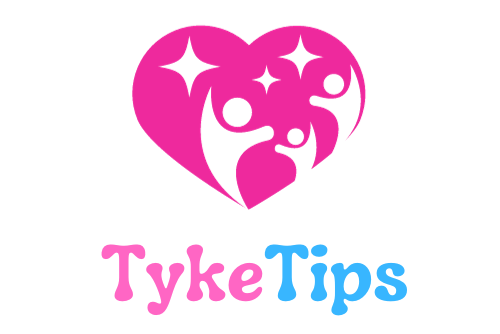In the article “Tantrums: A Normal Part of Toddlerhood,” you will learn all about how tantrums are a natural and expected part of being a toddler. Toddlers lack the ability to regulate their own emotions, so it’s important for parents to stay calm when tantrums happen. Giving in to tantrums only reinforces the behavior, so it’s crucial to outlast the tantrum and not give in. The article also explains the extinction curve, which shows that tantrums may initially get worse before improving. Strategies for containing tantrums, enlisting help from others, and modeling appropriate behavior are also discussed. Throughout the article, the primary focus is on providing valuable resources and support for parents dealing with tantrums at ParentingPowerUp.com.
Oh, no! It seems your toddler is throwing a tantrum! But don’t worry, my friend. Just like any storm that comes, tantrums will pass. In this enlightening article, Vicki and I will guide you through the right way to deal with toddler tantrums. We acknowledge that throwing tantrums is a normal part of being a toddler, and it’s important for you to understand that toddlers don’t have the ability to regulate their emotions quite yet. However, with tips and techniques to stay calm, refrain from giving in, outlast the tantrum, and contain it, you’ll be equipped to handle even the most difficult tantrums. Remember, storms always pass, and as primary caregivers, we have a significant influence on our toddlers’ behavior. So let’s dive into the article to discover how to handle toddler tantrums with grace!
Understanding Tantrums
Tantrums as a normal part of toddlerhood
Tantrums are a completely normal part of being a toddler. It is important to remember that this behavior is developmentally typical and age-appropriate. While tantrums can be challenging for parents to handle, it is essential to acknowledge that they are a natural part of a child’s development.
Inability of toddlers to regulate their emotions
Toddlers do not have the ability to regulate their own emotions very well. They are still learning how to understand and manage their feelings. As a result, they often become little emotional mirrors of their primary caregivers. This means that staying calm when tantrums happen is crucial. Remember, your child is looking to you for guidance on how to handle their emotions.
Impact of staying calm when tantrums happen
Staying calm during tantrums has a significant impact on your child’s emotional development. By remaining calm, you are modeling appropriate behavior and teaching your child valuable coping skills. When you can anticipate that a tantrum is coming, it becomes easier to handle the situation calmly. Your child will learn from your example and develop healthier emotional regulation skills over time.
Managing Tantrums
Reinforcing behavior by giving in to tantrums
It can be tempting to give in to tantrums in order to make them stop. However, giving in to tantrums actually reinforces the behavior. When you give your child what they want during a tantrum, you are teaching them that throwing a tantrum is an effective way to get what they want. This only serves to strengthen the tantrum behavior and make it more likely to happen again in the future.
The extinction curve and initial worsening of tantrums
When you begin to change the way you handle tantrums and stop giving in, you may notice that the tantrums initially get worse. This is called the extinction curve. Your child may think that their usual tantrum tactics are not working anymore, so they may escalate their behavior in an attempt to get their way. It is important to be prepared for this temporary worsening of tantrums and remind yourself that it is a natural part of the process.
Outlasting tantrums and not giving in
To successfully address tantrums, it is crucial to outlast them and not give in to your child’s demands. It can be challenging to withstand a tantrum, but it is important to remember that the tantrum will eventually subside. By not giving in, you are teaching your child that their tantrums will not result in them getting what they want. This is an essential lesson in emotional regulation and healthy communication.
Containing tantrums when they occur
While you cannot control whether your child throws a tantrum, you can control how you respond to it. One way to handle tantrums is by containing them. For example, if your child starts throwing a tantrum in the car, you can choose to remain in the car until they calm down. By setting the expectation that you will wait until they are done with their tantrum, you are teaching them that their behavior will not change the situation.
Enlisting help from others for predictable tantrums
If your child has predictable tantrums, it can be helpful to enlist the help of someone else to contain the tantrum. For example, if your child always throws a fit when it is time to go to the store, you can arrange for them to stay with a trusted friend during those times. By having someone else assist you in managing the tantrum, you can effectively contain the behavior and prevent it from escalating further.

Teaching Healthy Coping Mechanisms
Tying tantrums to passing storms
A useful analogy for tantrums is to think of them as passing storms. Just like storms, tantrums are temporary and will eventually subside. It is important to teach your child that tantrums are a natural part of life but will not last forever. By framing tantrums as passing storms, your child can better understand that their feelings will change over time.
Influence of primary caregivers on toddlers
Toddlers are heavily influenced by their primary caregivers. As a parent, you have a significant impact on your child’s emotional development and coping mechanisms. Your child observes your behaviors and emotions, and they learn from your example. By modeling appropriate behavior during tantrums, you are teaching your child how to handle their emotions in a healthy and constructive way.
Modeling appropriate behavior during tantrums
When your child is throwing a tantrum, it is important to model appropriate behavior in response. Stay calm, speak softly, and show empathy towards your child’s emotions. By demonstrating how to remain composed during a challenging situation, you are teaching your child valuable skills that they can use to manage their own emotions in the future.
Teaching children how to handle tantrums
While tantrums are a normal part of toddlerhood, it is important to teach your child healthy coping mechanisms. Encourage your child to express their feelings in words instead of through tantrums. Help them identify and label their emotions, and teach them alternative strategies for dealing with their frustrations. By providing guidance and support, you can help your child develop effective emotional regulation skills.
Finding Support and Resources
The availability of resources and support for parents
Parenting can be challenging, and it is important to remember that you are not alone. There are many resources and supports available to help you navigate the ups and downs of raising a child. From books and articles to parenting programs and support groups, there are numerous options for finding guidance and advice.
Accessing resources and support at ParentingPowerUp.com
ParentingPowerUp.com is a valuable online resource that provides support and information for parents. It offers a wide range of articles, videos, and tools to help parents navigate the challenges of parenting, including dealing with tantrums. By accessing this website and exploring its content, you can find additional guidance and support to help you on your parenting journey.
Remember, tantrums are a normal part of toddlerhood and can be managed with patience, understanding, and appropriate strategies. By staying calm, refusing to reinforce the behavior, and teaching healthy coping mechanisms, you can support your child’s emotional development and help them navigate their feelings more effectively. And remember, you are not alone – resources and support are available to assist you along the way.

